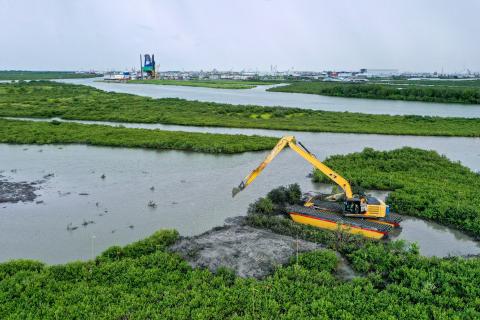The Louisiana Trustee Implementation Group (TIG) has completed its Monitoring and Adaptive Management (MAM) Strategy (PDF, 44 pages). The document describes the TIG’s objectives, processes, and priorities to support restoration planning, implementation, and evaluation through monitoring and adaptive management activities.
This Strategy improves the TIG’s ability to achieve effective and efficient restoration of natural resources injured by the Deepwater Horizon oil spill in the Louisiana Restoration Area—with more than $200 million from the Deepwater Horizon monitoring and adaptive management funding allocation.
Monitoring Restoration Performance
The trustees are committed to restoring the natural resources of the Louisiana Restoration Area injured by the 2010 oil spill. They are also committed to monitoring the collective performance of their restoration projects and to take what they learn and adaptively manage those projects and apply new knowledge to other projects.
Working from a foundation of the restoration goals and approaches outlined in the Trustee Council's Programmatic Restoration Plan, the Louisiana TIG first developed high level objectives specific to seven of the nine restoration types applicable in the Louisiana Restoration Area:
- Wetland, Coastal, and Nearshore Habitats
- Nutrient Reduction
- Sea Turtles
- Submerged Aquatic Vegetation
- Marine Mammals
- Birds
- Oysters
Following the high level objectives are a series of nested objectives that provide the MAM Strategy framework for assessing progress towards attaining restoration goals.
SMART Objectives
A key component of the MAM Strategy is the use of “SMART Objectives” for each restoration goal. Smart objectives:
- Are Specific and clearly define what the restoration effort will achieve
- Provide a Measurable target for restoration success
- Have targets identified by resource experts as Achievable
- Have measures that are Relevant to ecosystem objectives
- Are Timely with appropriate timeline for quantifying progress
Trustee Collaboration
The MAM Strategy is the result of a multi-year collaborative effort that included more than 50 working sessions, involved subject matter experts for each restoration type and engaged 48 collaborators across all trustee agencies. It is also a living document that may be modified by the TIG as objectives are refined, additional information and data are gathered, and/or additional needs are identified.
Visit the Louisiana Restoration Area for more information on restoration planning, projects, funding and other topics.


